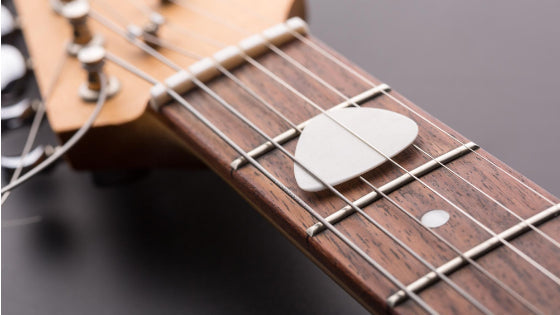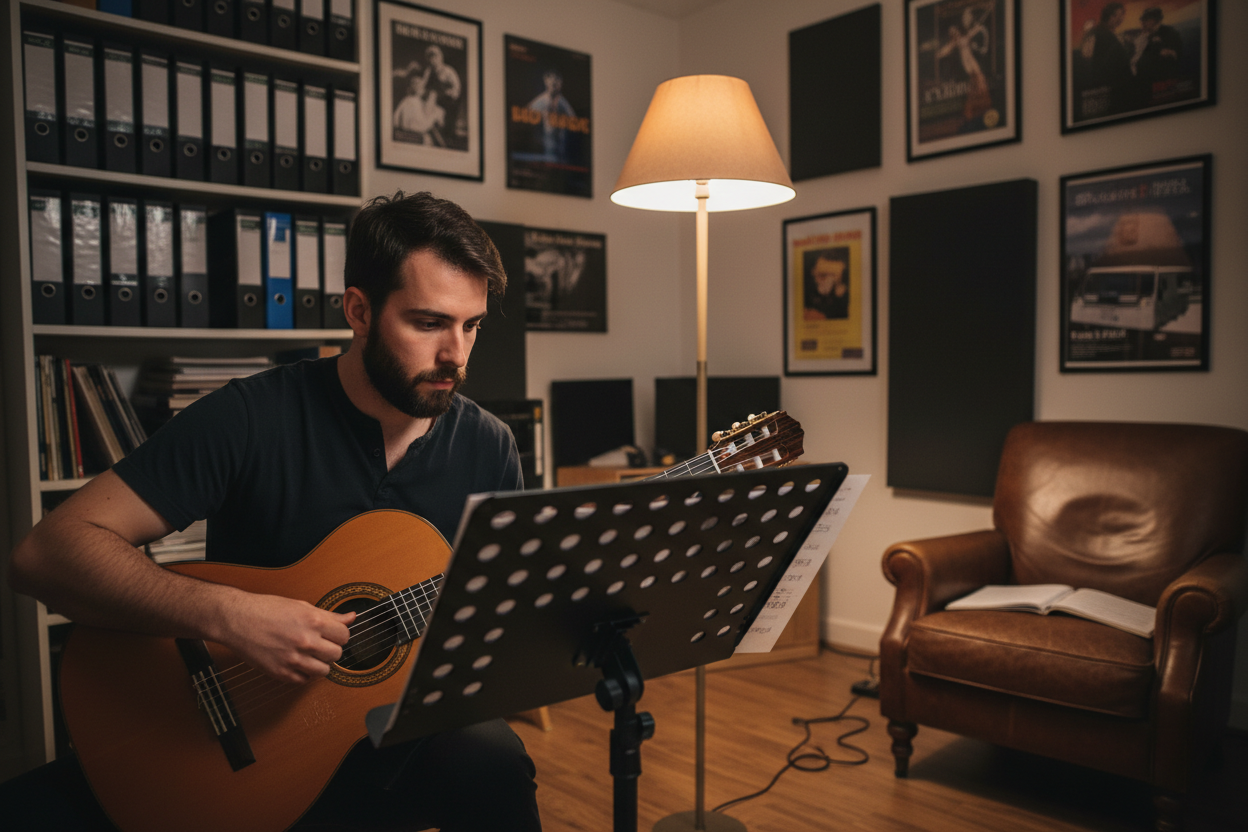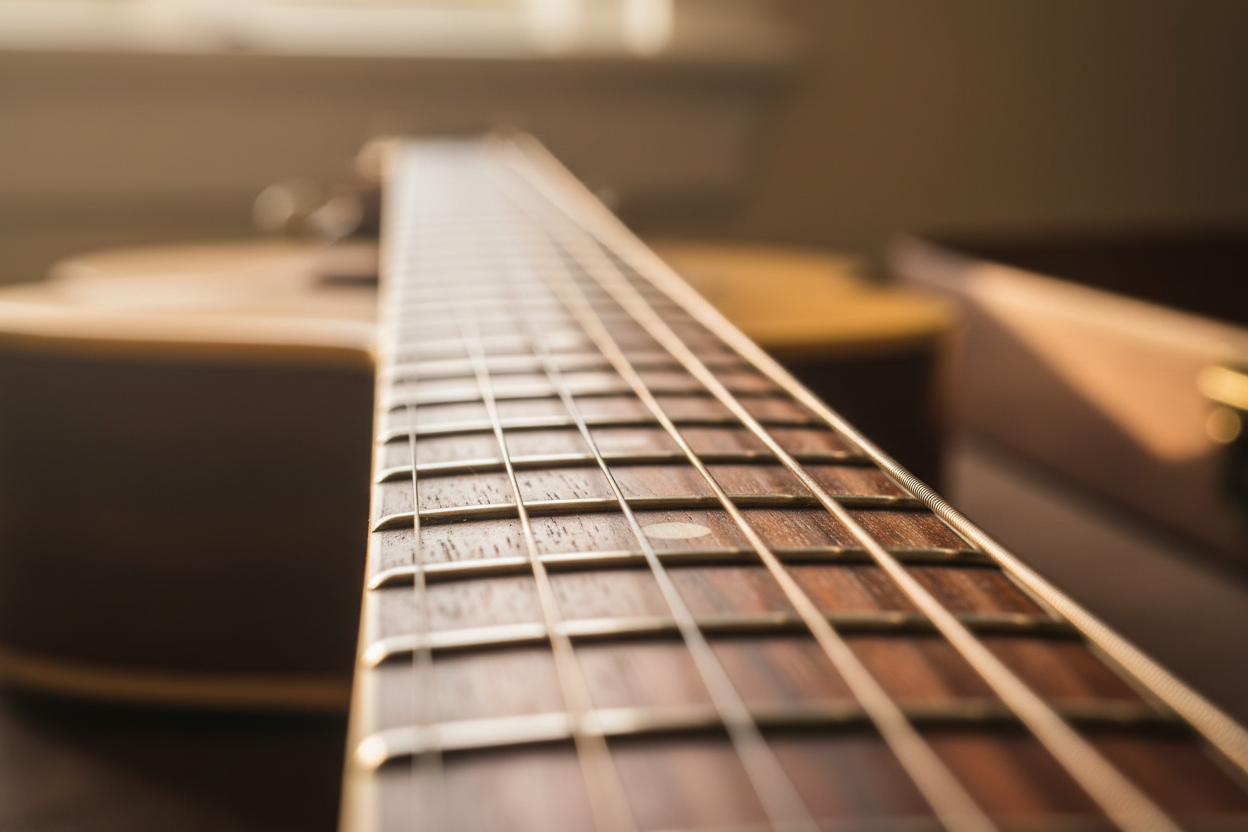It’s not that fretboards come in many shapes and sizes. A fretboard is a place that holds the frets and should be there to help you create a tone, there is not much space for variety and changes in the feature that affect the tone or quality of play. However, the small differences that we find on fretboards do count, at least according to the well-established manufacturers’ experience.
We have covered already what are and how different guitar neck shapes are used, and today we will cover the basics of fretboard radii and how they can affect the playing of a guitar.
What is Fretboard Radius?
In short, the fretboard radius is the curvature of the fretboard when we cut across the guitar neck. It’s the slightly concave shape a fretboard creates that positions different strings at slightly different heights. While other string instruments and even some guitars have flat fingerboards, a slightly curved fingerboard has over time become a standard. There are several standardized radiuses we can find.
The radius is calculated by imagining the fingerboard’s surface being a part of a large circle, with the fingerboard’s curvature on the circle itself. The radius of this circle is the radius of our fingerboard. Another, fund way to understand, is to imagine having many guitars and joining their fretboards together so they can form a perfect circle, and measuring the radius of this circle.
So, if the fretboard's radius is a lower number, the lower the radius of the circle, therefore, the more curvature the fretboard has. Vice versa, the higher the radius number is, the less curvy the fretboard.
Reasons Behind the Fretboard Radius
While the fretboard radius doesn’t make a difference in the guitar sound in real life, it does make a difference in the way you play the guitar. It’s not easy to find the general rule of thumb in this case, but there are several factors you can take into account when picking the right fingerboard radius.
The first factor is the curvature itself, which can affect your particular style in play (more on that later). The main things to consider are the difference in laying bars for bar chords as well as string bending.
The second factor you should pay attention to is how the strings are laid out. The distance between the fretboard and the string (or the action) can be either adjusted to the same distance across strings or with slight changes depending on the string. This is adjusted through the guitar bridge during manufacturing.
Some players like their strings near the frets to press them more responsively and with less effort. Others like to have their strings a tiny bit higher to lock in their positions and minimize failed notes during playing.
The combination of these two factors will combine with the third one, the player. The hand size, finger length, pressing strength, and the way a player holds the guitar neck will combine with the fretboard curvature and string action to form harmony or the lack of it when playing the instrument.
Fretboard Radii used now

The market has seen the development of fretboards including the fretboard radius. It started with completely flat guitars and it remains a standard in classical guitars for example. You can find flat fingerboards on acoustic guitars occasionally as well.
Following the experience and demand of contemporary users, manufacturers race to develop fretboard radius standards over different decades.
Currently, the standard fretboard radius can go from 7 to 16in. Once again, the higher the radius means that the fretboard is less curvy.

For example, the most common Fender guitar fretboards have 9.5 inches radius, and some vintage-style Fenders use 7.25-inch fretboards. Recently, it’s common to see 12” fretboards on Fenders, and there is a model that uses 15.75” fretboards (FMT HH).

Gibsons, on the other hand, preferred using flatter 12” fretboards and 12” is the standard for blues rhythm players. Ibanez and Charvel, as well as Jackson guitars, went even further and have been creating 16” fretboards on their guitars as a golden standard. PRS likes their guitar fretboards somewhere in the middle with 10”.
Enter compound fretboards
A recent state of events has nudged most manufacturers to explore the ergonomics and playability of their guitars according to a modern player’s standard. Several trends have been noticed and, like in everything, the producers started tweaking nuances to maximize potential performance.
One example of this trend is the growth in the popularity of compound fretboards. These fretboards have more complex shapes with the curvature changing from the top to the bottom of the guitar neck (when the neck stands vertically).
This usually gives more curvature on the top (low frets) and gradually flattens to less curvature near the end of the fretboard. Many players find this more convenient for their style of playing and the way they hold the guitar at different positions.
Some examples of compound fretboard radii are Fender guitars that can have 7.25” at the beginning and 12” at the top (7.25”-12”), 9.5”-14”, or 12”-16”.
What does Fretboard Radius Mean to a Player?
Once again, the variety of fretboard shapes goes to the case that there is no perfect or best type of fretboard for everyone. Every player is different and can even enjoy different fretboard shapes when playing a different song.
The two factors to consider subjectively is how well you deliver what you are playing and how the curvature of the fretboard affects it as opposed to the overall comfort you feel when playing.
For example, players in general lean toward believing that curved fretboards are better for chords, while some will hold onto flatter guitars as they feel flatter fretboards help them with bar chords.
The same goes for the opposite – solo players prefer flatter fretboards because of the more straightforward string layout and more control during bending. However, there’s a player here and there that intuitively pulls off precise bends on curvier fretboards, or these fretboards fit their hand size and positioning during solos.
Written by Marko Jovanovic




